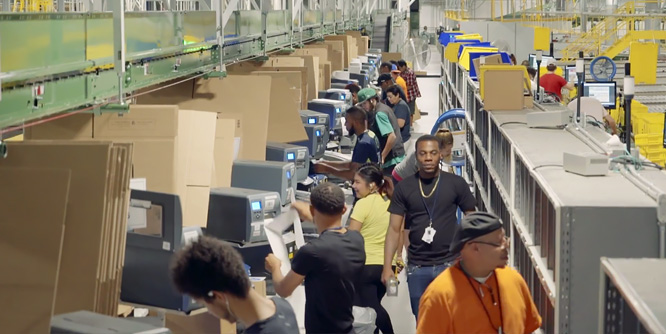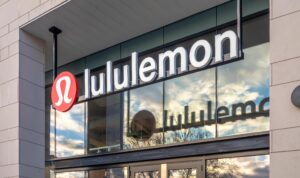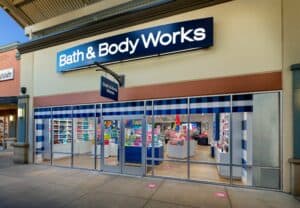
Source: Gap video
September 12, 2022
Do retailers face too many conflicts as they move into logistics services?
Gap and American Eagle Outfitters have joined Amazon.com, Walmart and Target in peddling logistics services to third-party retailers. A Wall Street Journal article raised concerns over their ability to recruit prospective customers due to data privacy qualms and competitive reasons.
“The customer fulfillment activities are so core to any retailer — any company, but a retailer in particular,” Michael Dominy, VP of supply-chain research at Gartner, told the Journal. “You’re delivering that customer experience. So turning that over to somebody else is always challenging.”
Gap, on Aug. 23, introduced GPS Platform Services, encouraging retailers to take advantage of the logistics capabilities of the second largest apparel e-commerce player in the U.S. for next-day and two-day shipping, short-term storage and cross-docking via its warehousing and a self-service portal. The service offers API integrations to major commerce platforms including Amazon and Shopify.
American Eagle, on Aug. 9, debuted a nationwide Quiet Platforms Delivery Network boasting more than 40 carriers. Tapping technology from its acquisitions of Quiet Logistics and AirTerra, American Eagle said its ability to defer carrier decisions will optimize cost and service levels for shippers and carriers.
Shekar Natarajan, American Eagle’s chief supply chain officer, said in a statement, “We’re leveling the playing field by offering high-quality delivery experiences without prohibitively high investments in management and technology infrastructure.”
In late August, Walmart’s last-mile delivery service, GoLocal, surpassed one million in deliveries in its first year. Target entered the third-party logistics (3PL) space with its 2017 Shipt acquisition. At Amazon, sellers ponied up $103 billion in FBA fees in 2021, making up about 22 percent of Amazon’s revenue.
Additional logistics networks from retailers offer ways for third-party merchants to diversify carriers. Amazon recently added fuel and inflation surcharges to FBA fees.
Although both Gap and American Eagle promise prospective third-party sellers data protections and visibility into supply chain operations, Vivek Astvansh, professor of marketing and data science at Indiana University, suspects fashion competitors may balk at forming logistics partnerships. He told the Journal, “There is a risk that you might be exposing your core competency.”
- Retailers Start Selling Something New: Logistics Services – The Wall Street Journal
- GPS Platform Services – Gap
- GPS Platform Services Launch – Kevin Kuntz/Twitter
- Gap Launches 3PL Distribution Platform – Globe Street
- Gap Inc. Launches Fulfillment Services Offering – Multichannel Merchant
- Quiet Platforms Announces Launch of New Nationwide Delivery Network – American Eagle Outfitters
- Walmart Inc. (WMT) Q2 2023 Earnings Call Transcript – The Motley Fool
- Will ‘coopetition’ enable retailers to profitably deliver online orders? – RetailWire
- Amazon adds a fuel and inflation surcharge to the fees it charges to sellers. – The New York Times
Discussion Questions
DISCUSSION QUESTIONS: What do you think of the opportunities for Gap and American Eagle Outfitters as 3PL providers? Are their challenges attracting prospects similar or different than Amazon, Walmart and Target?
Poll
BrainTrust
Carol Spieckerman
President, Spieckerman Retail
Paula Rosenblum
Co-founder, RSR Research
Neil Saunders
Managing Director, GlobalData
Recent Discussions







With core retail businesses under pressure, trying to leverage other parts of the operation for profit makes sense. Gap, American Eagle and Walmart all have skills and logistics networks that are beneficial to other companies. However there are two caveats. First, some retailers will be reluctant to partner for fear of exposing themselves to competitors; this is already the case with Amazon. Second, no matter how good these retailers are in logistics they are nowhere near as good as Amazon which has built out an extremely comprehensive network.
The opportunities are there. The question is: Do retailers want to vertically integrate in this fashion and, assuming they are really good at logistics, will they be providing a heretofore competitive tool to their own competitors?
Amazon and Walmart are already logistics companies at the core. For Gap and American Eagle, trying to move into the logistics space will only create a loss of focus on the core retail business and put the entire enterprise at risk. Both companies would be better served by working to become better retailers.
Platform monetization and business model diversification are retail’s growth engines of the future. American Eagle and Gap are following along with the trend, albeit in a smaller orbit. Smaller brands might be more open to partnering with non-Amazon entities for that very reason.
Logistics are important for any size retailer. Today’s retail environment requires smart buyers and a flexible logistics strategy. Margins are tighter because of competition, discounted/free shipping, and returns. The current consumer’s shopping patterns require newer strategies, and that includes logistics more than ever.
It’s understandable that some retailers might not want to sign up with the behemoths, Walmart and Amazon. But I don’t think that makes AEO and Gap equal contenders for their 3PL business. Judging by the way AEO executes their own business, they leap to the #1 choice. Judging by the current state of affairs at the Gap corporation, they would seem to be a distant second choice behind AEO. What will Gap Inc. even look like three years from now? Which division will be next on the block for divestiture? Gap probably has a very capable operational platform. But I personally would want to see more stability in both the front end and back end before turning over my 3PL business.
If Gap is successful in logistics, maybe they can sell off their retail businesses. 🙂
Retailers are going to have to turn their competitive advantage into a business for others to use. This is the modern spirit of the industry. There will be an adoption hurdle at first because of retail prospects’ fear that they’re giving up information to their competition, but eventually the learning will come that it’s just about optimizing efficiency. It will be interesting to see which retailers end up owning which services for the industry.
I somehow think Gap has bigger fish to fry. We. Are. Retailers.
Amazon is synonymous with supply chain and logistics. That is not the case with retailers like Gap and American Eagle. I think it will prove difficult for them to broaden their offering to fulfillment without diluting their value as a retailer.
Distribution is what retailers do best. And if you’re a mid-tier retailer who wants to improve your delivery experience and you don’t directly compete with Gap or American Eagle, who would you prefer to give your distribution business to, Gap and American Eagle, or Amazon, Walmart, or Target? The former makes more sense. The question is, can Gap and American Eagle deliver other merchandise as effectively as they can apparel? Or will they struggle with shipments that require more cartons and odd sizes, versus the poly bag common in apparel distribution? That could be a deciding factor in their ability to attract prospects.
Who would you prefer to give your distribution business to, Gap and American Eagle, Amazon, Walmart, or Target? If I were a retailer without a competitive distribution facility, I would pick the service that delivers the best cost and delivery performance.
One of the best illustrations around this is Nike. It’s remarkable how they gradually built their brand by pulling out of most marketplaces and strengthening their D2C offering. I believe brands that are just starting their eCommerce journey can use 3PL service providers. However, in the longer run, it is crucial to establish a direct relationship with customers. To secure a distinct position, brands must offer engagement and experience at every touch point in a customer’s journey. Therefore, logistics must be part of a brand’s product offering.